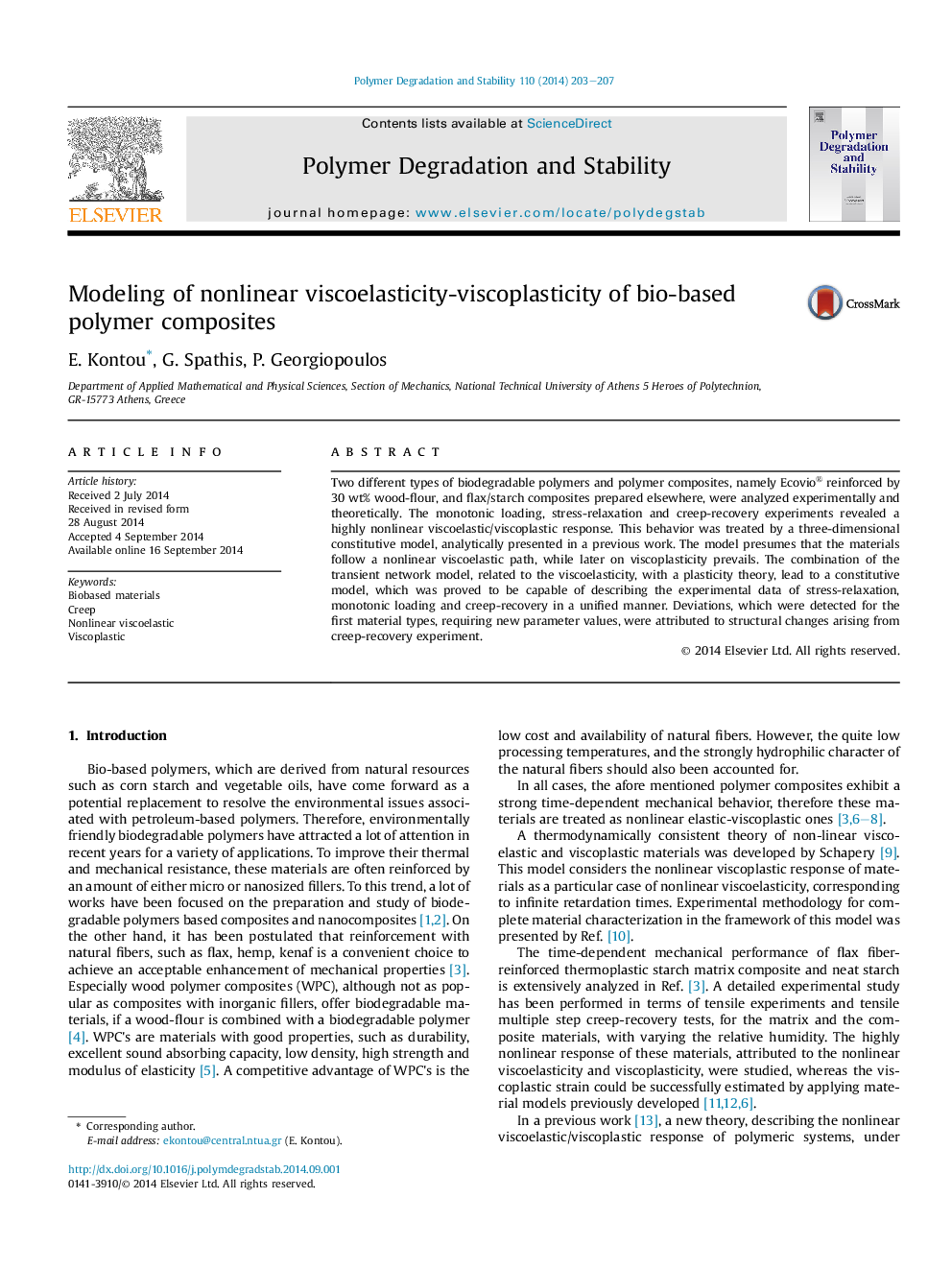| Article ID | Journal | Published Year | Pages | File Type |
|---|---|---|---|---|
| 5201652 | Polymer Degradation and Stability | 2014 | 5 Pages |
Abstract
Two different types of biodegradable polymers and polymer composites, namely Ecovio® reinforced by 30Â wt% wood-flour, and flax/starch composites prepared elsewhere, were analyzed experimentally and theoretically. The monotonic loading, stress-relaxation and creep-recovery experiments revealed a highly nonlinear viscoelastic/viscoplastic response. This behavior was treated by a three-dimensional constitutive model, analytically presented in a previous work. The model presumes that the materials follow a nonlinear viscoelastic path, while later on viscoplasticity prevails. The combination of the transient network model, related to the viscoelasticity, with a plasticity theory, lead to a constitutive model, which was proved to be capable of describing the experimental data of stress-relaxation, monotonic loading and creep-recovery in a unified manner. Deviations, which were detected for the first material types, requiring new parameter values, were attributed to structural changes arising from creep-recovery experiment.
Related Topics
Physical Sciences and Engineering
Chemistry
Organic Chemistry
Authors
E. Kontou, G. Spathis, P. Georgiopoulos,
